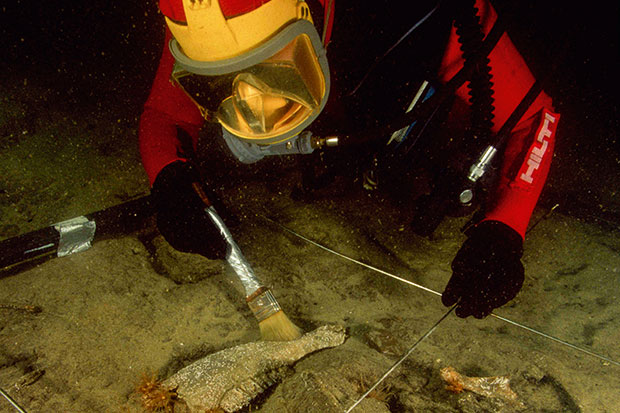It was not so unusual for someone to turn into a god in Egypt. It happened to the Emperor Hadrian’s lover, a beautiful young man named Antinous, who was drowned in the Nile in the autumn of 130 AD. It was also the fate of Queen Arsinoë II, who had a complicated life. At the age of 15 she became wife to the 60-year-old ruler of Thrace. When he died in battle, she married her half-sibling, who murdered two of her sons. Her next husband was her full brother.
A headless sculpture of Arsinoë stands about halfway around Sunken cities at the British Museum. It is, as a label rightly points out, an almost perfect fusion of Greek and Egyptian art. Arsinoë was represented as an incarnation of Aphrodite. The hard black stone has been polished until it has the smoothness of skin; Arsinoë’s nakedness is emphasised by the diaphanous drapery that clings to her body.
This carving has the geometric structure of Egyptian sculpture, combined with the sensuous, living quality of the classical art we call Hellenistic. It is, in other words, a bit of a masterpiece, and also — like a good deal of art and behaviour associated with ancient Alexandria — distinctly weird.
Alexandria was one of the great centres of the Greco-Roman world, but a great deal less remains visible there than in Rome, Athens or Luxor and Cairo. In recent decades, however, some remnants — or, more precisely, remains of neighbouring and preceding settlements — are starting to emerge from beneath the waters of the bay of Aboukir, a few miles north-west of Alexandria itself.
Greeks began to settle on the Egyptian coast around the Nile Delta centuries before Alexander the Great founded the city to which he gave his own name in around331 BC.








Comments
Join the debate for just £1 a month
Be part of the conversation with other Spectator readers by getting your first three months for £3.
UNLOCK ACCESS Just £1 a monthAlready a subscriber? Log in